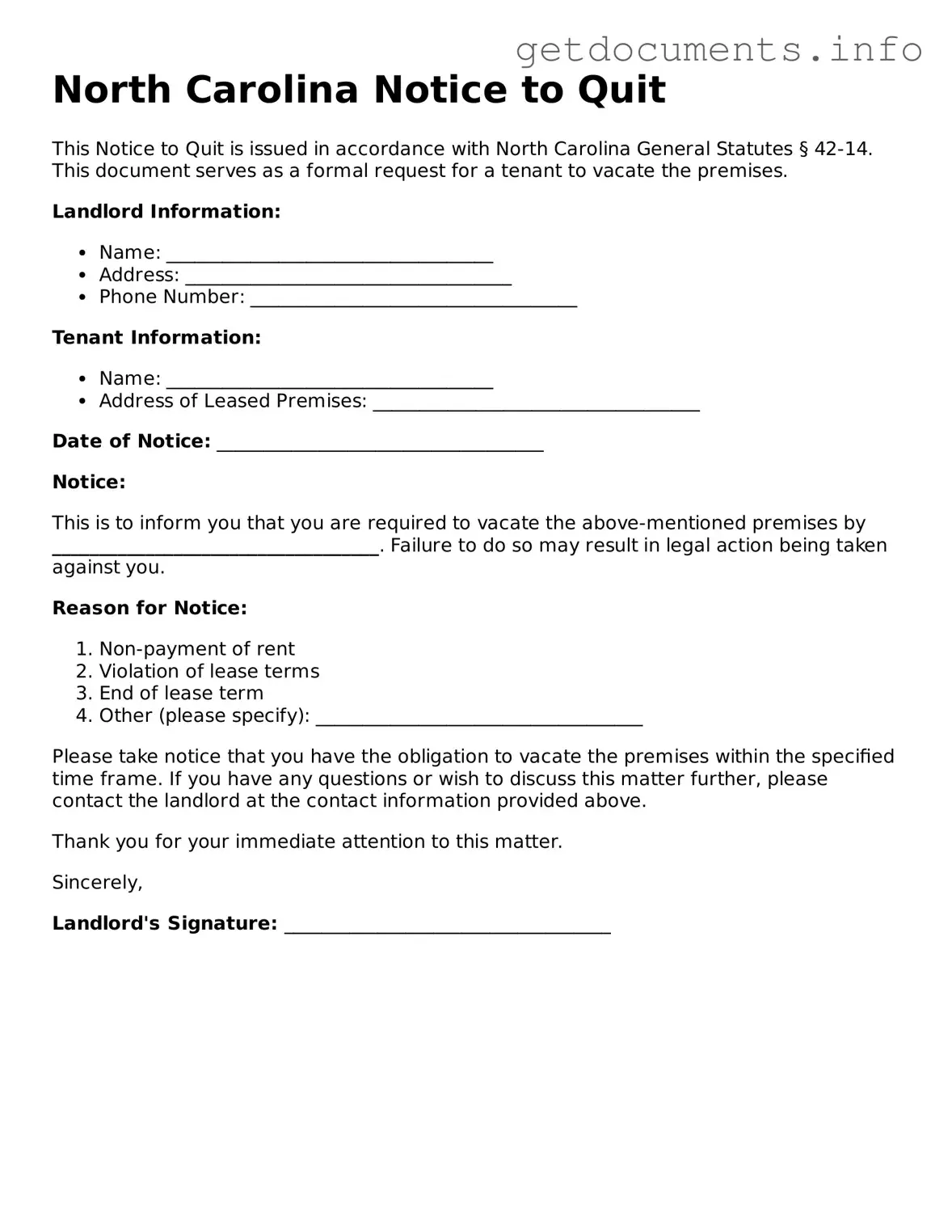Free Notice to Quit Template for North Carolina
The North Carolina Notice to Quit form is a legal document used by landlords to formally notify tenants of their intention to terminate a lease agreement. This notice serves as an important step in the eviction process, providing tenants with a specified timeframe to vacate the premises. Understanding this form is crucial for both landlords and tenants to ensure compliance with state laws.
To fill out the Notice to Quit form, click the button below.
Access Notice to Quit Editor
